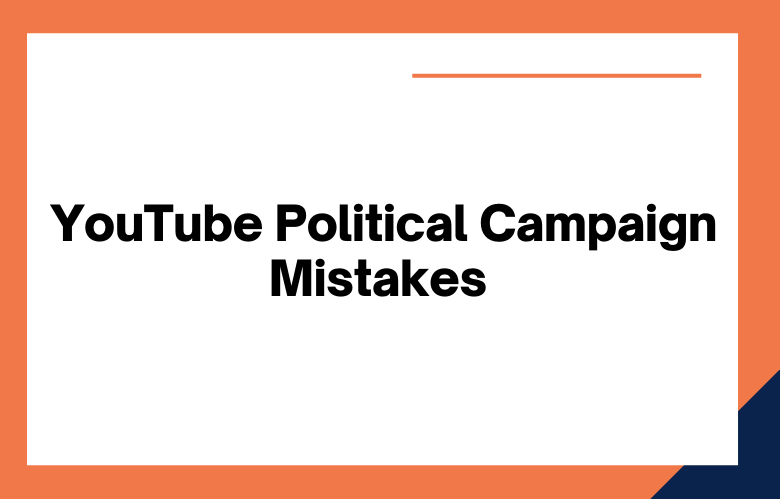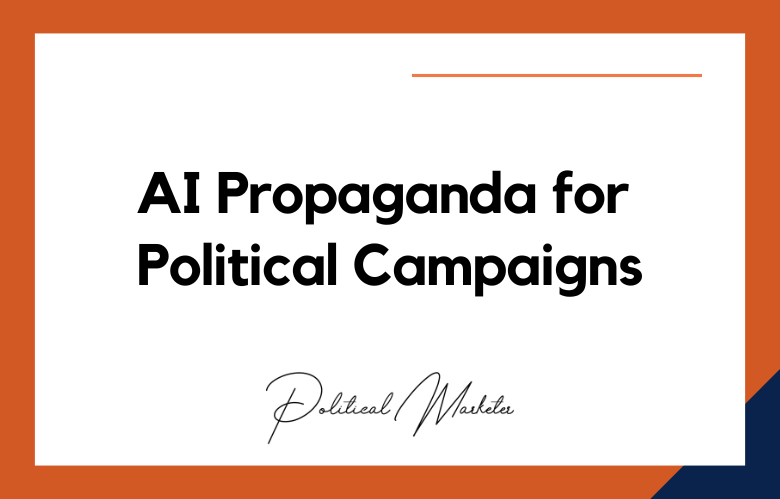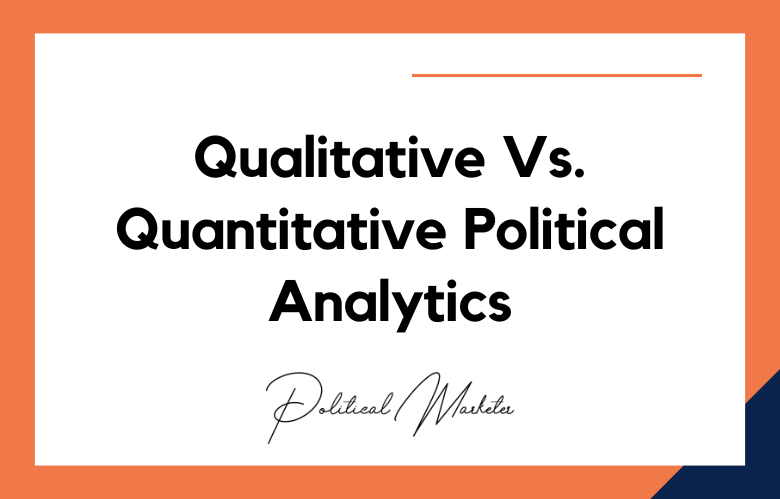If you’re a political campaign, it’s essential to ensure your YouTube channel is set up for success. However, many campaigns make common mistakes that can cost viewers and potential supporters. We’ll outline some of the most common mistakes political campaigns make on YouTube and how to avoid them.
YouTube can be a powerful tool for political campaigns, but it can do more harm than good if misused. In this blog post, we’ll look at some of the most common mistakes political campaigns make on YouTube and how to avoid them.
Common Mistakes Political Campaigns Make on YouTube
- Not having a YouTube channel
- Failing to upload videos regularly
- Uploadings low-quality content, such as phone or webcam footage
- Not using annotations and captions correctly
- Being unprofessional with the video’s title and thumbnail
- Not optimizing videos for mobile
- Not using annotations to provide links to other content on YouTube
- Using a generic thumbnail that doesn’t tell the viewer what the video is about
- Uploading too many videos at once without promoting them first, then uploading more later when they do get traction
- Promoting only one candidate in their channel’s name and description
- Not understanding the YouTube algorithm
- Using unprofessional-looking graphics and subtitles
- Uploading videos that are too long or too short
- Focusing on content rather than audience engagement
- Not including a call to action in the video description
- Uploading long videos that are not engaging for viewers
- Not adding subtitles or captions to their videos so more people with hearing disabilities can access them
- Adding ads before the video starts playing makes it difficult for viewers to skip the ad and get right into the content
- Not having a video strategy
- Focusing too much on the candidate and not enough on the voter
- Using footage from other events or TV interviews instead of filming original content
- Lacking clear messaging can confuse voters and make them less likely to vote for you
- They are trying to be funny when they should be serious
- Not including a call-to-action at the end of your video
- Using too many YouTube features that are unfamiliar to viewers, like annotations and cards
- Not providing enough context on what they’re talking about in their video or not giving people enough time to process information before moving on to the next idea
- Not using captions for videos with sound
- Not including captions
- Uploading videos that are too long or not engaging enough
- Focusing on the candidate’s platform instead of telling voters why they should vote for them
- Using YouTube as an archive for speeches and debates but not using it to generate new content
- Uploading amateur videos that don’t promote the candidate or their platform
- Not using keywords in video titles and descriptions to increase visibility on search engines
- Making videos that are too short and unmemorable, wasting the viewer’s time
- Creating content that is not engaging or interesting
- Not having a YouTube channel for your campaign-specific
- Using the wrong type of video – live-action vs. animation, or vice versa
- Not using annotations to direct viewers to other videos on your channel or website
- Relying too much on text and not enough on visual elements
- Having a generic thumbnail for every video
- Using the same intro and outro for every video
- Focusing too much on what they are going to say instead of how they are going to say it, i.e., not enough emphasis on body language or tone of voice
Common Mistakes Political Campaigns Make on YouTube Ads
- Using outdated visuals or graphics
- Being too general with their message and not targeting specific audiences
- Focusing on the wrong demographics, such as millennials instead of seniors
- Putting too much focus on fundraising rather than getting out the vote
- Not targeting your audience
- Creating a video that is too long or doesn’t have a clear call to action
- Using an unprofessional thumbnail image
- Targeting the wrong age demographic on YouTube
- Bad timing of video uploads
- Not using a call to move in the description
- No thumbnail image or use of an unprofessional image/video
- Choosing the wrong video thumbnail
- Focusing on features instead of benefits
- Being too vague about what they want viewers to do next
- Not understanding the nuances of video advertising and how to target your audience
- Focusing on quantity over quality- people will click away if they see too many ads in a row
- Not using YouTube’s TrueView format, which allows viewers to skip ads after 5 seconds or less
- Ignoring the importance of call-to-action for viewers, such as asking them to subscribe or buy something
- Poorly written titles and subtitles
- Lack of clear messaging
- Not targeting the right audience
- Poorly written tags and descriptions
- Too many ads that are too similar to one another
- Ads that don’t match the tone of your channel or video content
- Not tailoring the ad to the audience’s interests
- Too many ads on one page
- Poorly-made videos that are not engaging or entertaining
- Ads with inappropriate content
- Not having a call to action on the video
- Having too many ads running at once
- Using low-quality videos that are blurry or out of focus
- It does not have good sound quality.
Conclusion
Political campaigns and YouTube seem like a match made in heaven.
But there are some common mistakes that political campaign teams make when it comes to this social media platform, which can cost them votes or even the election.
If you’re running for office, use these tips as your guide to help create an effective video strategy on YouTube!
One way to get in touch is by filling out our online form on this site or give us a call at
+91 9848321284. Let’s work together today!
Common Mistakes Political Campaigns Make on YouTube: FAQs
What Are The Most Common Mistakes Political Campaigns Make On YouTube?
Many campaigns fail to define clear objectives, use inconsistent branding, ignore SEO optimization, or produce low-quality video content.
Why Is Not Optimizing Video Titles A Major Mistake?
Unoptimized titles reduce discoverability and search rankings, reducing reach and engagement.
How Does Poor Thumbnail Design Impact Campaign Videos?
Unappealing or irrelevant thumbnails fail to attract clicks, leading to reduced views and ineffective messaging.
Why Should Campaigns Avoid Inconsistent Posting Schedules?
Inconsistency confuses subscribers and disrupts audience retention, weakening campaign momentum.
Is Ignoring YouTube SEO A Critical Campaign Error?
Not using tags, proper descriptions, and transcripts limits organic reach and visibility among target voters.
How Do Campaigns Mishandle YouTube Ads?
Mistakes include poor targeting, unskippable ad formats for the wrong audiences, or unclear calls to action.
What Happens When Videos Lack A Clear Narrative?
They confuse viewers, reduce emotional impact, and fail to build candidate identity or voter connection.
Why do Some Campaigns ignore Engagement?
Not replying to comments or disabling them altogether limits community building and trust.
Are Campaigns Overlooking Analytics On YouTube?
Many fail to study audience retention, traffic sources, and demographics, missing critical optimization opportunities.
What Is The Risk Of Not Using Subtitles Or Captions?
Videos without captions lose accessibility, alienate hearing-impaired voters, and underperform in silent viewing environments.
Why Is Cross-Promotion Important For Political Videos?
Cross-promoting on other platforms increases visibility, shares, and overall voter outreach effectiveness.
Do Campaigns Overuse Long Videos On YouTube?
Yes, lengthy videos without pacing or structure lead to viewer drop-off and diluted messaging.
How Can Inadequate Branding Hurt Campaign Video Strategy?
Missing or inconsistent logos, fonts, and color schemes reduce brand recall and professional credibility.
Is Posting Only Promotional Content A Mistake?
Campaigns that avoid behind-the-scenes or value-based content fail to humanize the candidate.
Why Should Playlists Be Used Strategically?
Organizing videos into playlists boosts watch time, improves user experience, and increases content discoverability.
Do Campaigns Omit CTAs In Videos?
Many forget to include clear calls-to-action, such as subscribe, donate, or volunteer links.
What Are The Pitfalls Of Ignoring Mobile Optimization?
With most of YouTube traffic coming from mobile, poor formatting leads to bad UX and high bounce rates.
Why Is Reusing The Same Video Format Risky?
Lack of variety makes content predictable, leading to viewer fatigue and lower engagement.
Can Ignoring Community Posts Hurt YouTube Campaigns?
Neglecting YouTube’s community features limits ongoing engagement and real-time voter communication.
How Should Campaigns Respond To Negative Comments?
By addressing concerns professionally, flagging misinformation, and maintaining transparency to build credibility.











